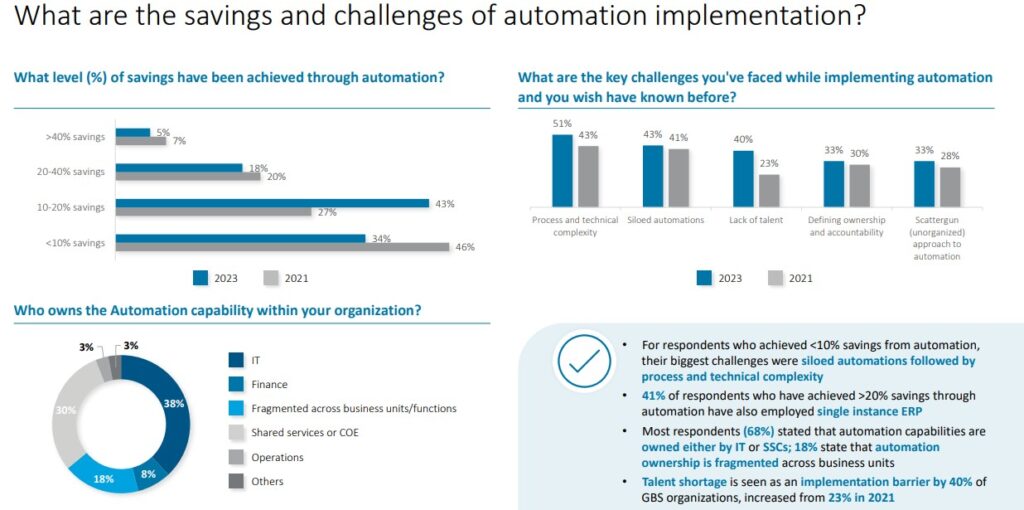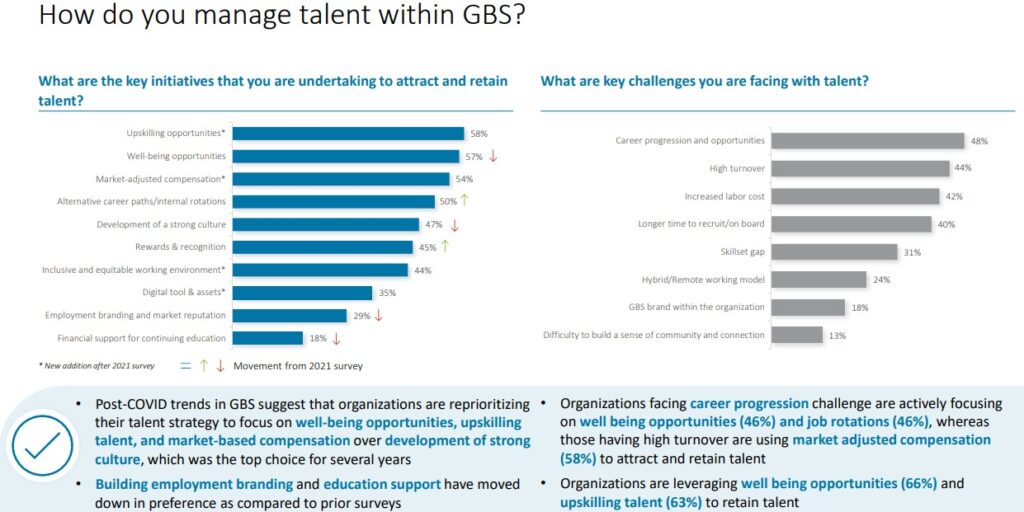Rapid scaling techniques: Efficient strategies for startups to scale operations quickly to meet market demands

Previous article: Startup staffing plan: Scaling and innovating rapidly
As you launch your new startup in the highly competitive technology sector, rapid scaling is indeed key to success. Establishing a robust market presence quickly is critical for survival and growth. Efficiently scaling operations is fundamental, encompassing the ability to meet increased demand, optimize resources, and capitalize on market opportunities before your competitors.
But how can you achieve rapid scaling? Let's explore strategies designed to help you go through this crucial phase. We'll cover important topics like expanding your team, using advanced technology, developing scalable frameworks, managing finances wisely, and overcoming common challenges. Each section offers valuable insights and practical advice, giving you the tools needed for effective scaling.
Startup staffing plan: Scaling and innovating rapidly
- Rapid scaling techniques for startups — you are here
- Funding the future: Staff augmentation's financial benefits
- Mastering Agile methodologies for effective remote team management
- Enhancing cultural integration in hybrid teams
Key takeaways
- Implement communication tools: Use Google Meet, Microsoft Teams, and project management software to improve coordination and communication.
- Adopt Agile methodologies: Use Scrum or Kanban to prioritize tasks and guarantee efficient workload management.
- Invest in scalable infrastructure: Use scalable cloud solutions and infrastructure-as-code tools like Terraform to manage resources in an efficient way.
- Automate repetitive tasks: Use Jenkins, Selenium, and Ansible to automate processes and improve efficiency.
- Standardize CI/CD processes: Utilize Docker and Kubernetes for efficient environment management and workflow optimization.
Step 1. Choose the effective software development scaling strategies
Software development scaling involves expanding your team, enhancing technological infrastructure, and optimizing processes to handle increased workload and customer base.
Architecture and coding practices
Before expanding your development team, it is imperative to refine your software development architecture and coding practices. Establishing a robust foundation is crucial for managing the increased complexity and workload that accompanies team growth. Strong architectural frameworks and efficient coding protocols are necessary to verify consistency and support seamless scaling transitions.
Stateful vs. stateless architectures
It is crucial to have a clear understanding of the distinctions between stateful and stateless architectures.
- Stateful architectures maintain session data and context across multiple requests. They are beneficial for applications requiring continuous user interactions, such as online banking and e-commerce platforms.
- Stateless architectures do not retain session information, making them more scalable and resilient, suitable for web applications and microservices.
For example, Amazon’s shopping cart system maintains the session state throughout the user's shopping experience. In contrast, RESTful APIs used by Netflix for streaming services are stateless, allowing each request to be processed independently, crucial for handling millions of concurrent users.
Horizontal and vertical rapid scaling
Scaling can be approached in two primary ways: horizontally and vertically.
- Horizontal scaling (scaling out). Add more servers or instances to distribute the load. This method is effective for applications that can be easily distributed, like web applications and databases. It offers flexibility, improved fault tolerance, and better handling of varying traffic patterns.
- Vertical scaling (scaling up). Upgrade the existing server's capabilities by adding more CPU, RAM, or storage. This method suits applications that require more processing power but cannot be easily distributed. While simpler to implement, it has limitations in terms of maximum capacity and potential single points of failure.
X initially faced performance issues due to rapid user growth. By moving from a monolithic architecture to microservices and implementing horizontal scaling, they in an efficient way managed the increased traffic.
Database scalability techniques
To scale databases, consider several techniques:
- Caching. Store frequently accessed data in memory to reduce database load.
- Replication. Create multiple copies of the database to improve performance and fault tolerance.
- Load balancing. Distribute incoming requests across multiple servers to avoid overloading any single server.
- Partitioning. Divide the database into smaller, more manageable pieces.
Facebook uses a combination of caching with Memcached to handle billions of read requests and replication to make certain high availability. They also use sharding (a form of partitioning) to distribute data across multiple servers, ensuring efficient data management and quick access times.
Combining rapid scaling strategies
Frequently, businesses employ a hybrid approach that integrates both horizontal and vertical scaling to address specific organizational requirements. This strategy offers the requisite adaptability to manage steady growth as well as unforeseen surges in traffic. By merging these scaling methods, organizations can develop customized solutions that are capable of adjusting to diverse operational needs.
LinkedIn, for instance, uses a hybrid approach by combining horizontal scaling for their search services and vertical scaling for their databases to provide both flexibility and robust performance.
Cloud scalability
Leveraging cloud services can simplify the process and make scaling really rapid. Cloud platforms offer tools and services that support both horizontal and vertical scaling, allowing you to adjust computing capacity based on demand. This is particularly useful for managing fluctuating and peak traffic efficiently, as cloud services often provide scalable resources and cost-effective solutions for startups.
Dropbox migrated to Amazon Web Services (AWS) to take advantage of its scalable infrastructure, efficiently managing storage needs and handling peak traffic without significant upfront investment in physical hardware.
Resource optimization and cost management
Selecting an appropriate strategy for rapid scaling necessitates an assessment of resource optimization requirements and budgetary limitations. Horizontal scaling, while potentially more costly at the outset, may prove more economical over time. On the other hand, vertical scaling provides a more predictable budgetary framework, yet may incur higher costs if adjustments are frequently required. It is necessary to weigh both immediate and long-term financial impacts to optimize scaling strategies efficiently.
Originally, Slack used AWS for its infrastructure management. By strategically implementing horizontal scaling for their microservices and vertical scaling for their database servers, they controlled expenses while maintaining strong performance.

System design and dependencies
The design of your system and its dependencies both play a crucial role in determining the appropriate strategy for rapid scaling. Applications designed to run on multiple servers are better suited for horizontal scaling, while those reliant on a single robust server may benefit more from vertical scaling. Understanding system dependencies helps in planning and implementing a scalable architecture that supports business growth and operational efficiency.
Airbnb uses a service-oriented architecture where each service is designed to run independently on multiple servers. This allows them to scale horizontally by adding more instances as needed, ensuring their platform can handle millions of users and listings globally without performance degradation.
Step 2. Choose the effective staff augmentation strategies
Role of staff augmentation in rapid scaling
Regarding startup growth, staff augmentation stands out as a strategic asset. By conducting a thorough assessment of your existing team and enlisting the support of external specialists where necessary, this method maximizes the utilization of both internal and external workforce to address staffing requirements.
The market for Staff Augmentation Services will show an incremental expenditure of around USD 81.87 Billion, with a CAGR growth of 3.53% over the five-year forecast period. A focused strategic approach to sourcing Staff Augmentation Services may reveal several potential advantages for buyers.
Benefits of staff augmentation
- Access to specialized skills
- Flexible scalability
- Cost-effectiveness
- Rapid deployment
- Knowledge transfer
- Risk mitigation
Access to specialized skills
Need niche expertise for a specific project? Staff augmentation can help you tap into a vast pool of professionals with the exact skills you need. For example, a pharmaceutical research organization once needed specialized scientific expertise for a short-term project. By partnering with a contract research organization, they completed the project on time without diverting their focus from core research areas.
Flexible scalability
Scaling your workforce up or down based on project demands guarantees optimal resource allocation. Imagine a hospitality business facing seasonal workload fluctuations. By adopting staff augmentation, they supplemented their workforce during peak seasons, managing increased customer demand and optimizing operational costs showing effectiveness.
Cost-effectiveness
Engaging remote workers or contractors for specific tasks reduces overhead costs associated with full-time employment. Take a technology startup, for instance. They used staff augmentation for rapid scaling of their development team for a product launch. By partnering with a specialized software development agency, they met project deadlines and achieved high customer satisfaction.
Rapid deployment
Staff augmentation enables the rapid deployment of skilled professionals, circumventing the protracted timelines associated with conventional recruitment processes. Indeed a notable example of this approach is Netflix, which utilized staff augmentation to enhance project scalability. By integrating specialized professionals, Netflix was able to allocate resources more efficiently and sustain high scalability levels, thereby facilitating its swift expansion and ongoing innovation.
Knowledge transfer

Augmented staff brings valuable experience and knowledge, enhancing your project and facilitating knowledge transfer within your team. A financial services firm faced hiring challenges for cybersecurity experts. Through staff augmentation, they bolstered their security team with skillful professionals, significantly improving data protection practices and mitigating security risks.
The average cost of cyberattacks or security breaches for businesses is about $1,360. For medium and large-sized companies, the cost can rise to as much as $6,160. In such a way, it is crucial for companies across various sectors to guarantee the protection of digital assets, networks, confidential information, and customer privacy. As a result, 71% of business leaders identify cybersecurity as their top priority due to the associated risks of digital threats.
The information and communications industry, in particular, lays significant emphasis on the security of digital assets. Given the sensitive nature of the data they manage and the broad-based disruption potential of successful cyber-attacks, a notable 86% of firms in this sector perceive cybersecurity as being a "very" or "fairly" high priority.
Risk mitigation
By adapting quickly to market changes and technological advancements, you can reduce the risks of falling behind your competition. Consider a traditional retail company starting on a digital transformation journey. With staff augmentation, they collaborated with a digital consulting firm to bring in digital strategists, UX designers, and software developers, successfully launching an e-commerce platform.

Selecting the right skills
Identifying the key skills needed for augmented staff is crucial. Here’s how you can go about it:
- Project requirements. Define the specific skills and expertise needed for the project. For instance, a tech company might hire additional developers for a three-month software update.
- Geographic proximity. Consider the location of the augmented staff, especially if time zone alignment or on-site presence is important. A global IT firm verifies its augmented staff are within similar time zones to facilitate real-time collaboration.
- Budget constraints. Verify the cost of augmentation fits within your budget while providing the necessary expertise. Startups often prefer short-term augmentation for high-cost specialized roles to keep expenditures manageable.
- Timeframe for delivery. Align the availability of augmented staff with your project timeline to guarantee timely completion. A financial firm might engage cybersecurity experts for a specific compliance deadline.
- Cultural and language compatibility. Make certain the augmented staff can integrate smoothly with your existing team, considering cultural and language factors. A multinational company emphasizes language proficiency and cultural fit during the selection process.
- Security concerns. Address any security and compliance requirements, especially for sensitive projects. A healthcare startup guaranties that all augmented staff follow with HIPAA regulations.
- Regulatory compliance. Verify the augmented staff and the augmentation provider follow with relevant regulations and standards. A fintech company makes certain all contractors meet industry-specific regulatory standards to avoid compliance issues.
Short-term vs. long-term augmentation
Deciding between temporary project-based augmentation and long-term strategic augmentation depends on your needs for rapid scaling.
- Short-term augmentation: Ideal for specific projects with defined end dates. Benefits include flexibility, cost-effectiveness, and rapid deployment. For example, retail companies use short-term staff augmentation to handle increased customer demand during the holiday season.
- Long-term augmentation: Suited for ongoing operational support and strategic growth initiatives. Benefits include sustained support, access to specialized skills, and knowledge transfer. For instance, companies might augment their team with additional developers for a year-long project to develop a new software platform.
The US Bureau of Labor Statistics has already predicted a 25% increase in employment for software developers, QA analysts, and testers from 2022 to 2032. This surge in demand results from rapid advancements in areas such as data science, artificial intelligence, cybersecurity, and cloud computing.
Leveraging technology for rapid scaling
Choosing technologies that can scale with increased demand is fundamental.
Кey principles and practices
- Choosing the right technology stack. Selecting a robust technology stack is important. Uber uses technologies like Node.js and MongoDB to guarantee scalability.
- Designing a scalable architecture. A modular and decoupled architecture employing both horizontal and vertical scaling techniques is crucial. Spotify uses a microservices architecture, allowing teams to develop and deploy services independently.
- Efficient database design. Use database schema normalization, optimized queries, and caching strategies. Amazon uses DynamoDB, a NoSQL database, for low-latency responses.
- Load balancing and caching. Distribute traffic across servers using load balancers and leverage CDNs for static assets. Twitter manages traffic load efficiently with a combination of load balancing and caching.
- Monitoring and performance optimization. Implement performance monitoring tools and continuously test and fine-tune applications. LinkedIn uses monitoring tools to guarantee optimal system performance.
- High availability and fault tolerance. Verify redundancy, distributed systems, replication, and disaster recovery planning. Google uses extensive redundancy and distributed systems to provide high availability.
- Scalability patterns and strategies. Employ vertical scaling for enhancing existing resources and horizontal scaling for adding resources. Facebook uses both strategies to manage its growing user base.
- Distributed systems. Improve scalability and fault tolerance with distributed systems. Airbnb’s system design guarantee continuous service even if one part fails.
Apart from that
- Cloud computing and infrastructure as code. Use cloud services for on-demand resource provisioning and elasticity. Dropbox leverages AWS for scalable storage solutions.
- Automation to enhance productivity. Implement automation tools to streamline repetitive tasks. A financial services firm used RPA to automate routine compliance checks.
- Data-driven scaling decisions. Use data analytics for informed rapid scaling decisions. Define clear objectives, standardize data collection, iterate, and involve stakeholders. Verify modular and scalable architecture, prioritize data quality and security, and implement domain-oriented data pipelines. Learn from successful case studies like Amazon and Netflix.
As the volume of business data increases, companies are looking for professionals who can manage, analyze, and make sense of the data obtained from various sources to derive significant insights. This is projected to result in a 35% increase in demand for data-focused roles such as data analysts, data scientists, data engineers, and data architects in the next ten years.

Step 3. Build and manage scalable teams
Creating scalable team structures
Your team structure should align with your product architecture. For a monolithic architecture, organize teams around product pillars or features. If you have a microservices architecture, structure teams around independent microservices for better alignment and efficiency.
Design your teams to be highly cohesive internally but loosely coupled with other teams. Each team should have clear responsibilities and minimal dependencies on other teams. This allows for greater autonomy and faster decision-making.
Ensuring stability within the team structure is important for maintaining productivity and efficiency in software delivery processes. Minimizing frequent changes is key to preventing disruptions and delays. When reorganization becomes necessary, it is important to provide teams with the necessary time and support to adapt and maximize their performance capabilities.
Specialist squads can be beneficial. A small percentage of your engineering workforce can form these squads, assisting different product teams with complex problems and ensuring specialized knowledge is utilized across the organization.
Culture and communication in teams' rapid scaling
Your company culture is going to be defined by those you hire first…Look for someone who is a quick learner and can be easily trained…enthusiasm, motivation, strong emotional intelligence.
Orest Hudziy
Maintaining a strong company culture and effective communication as your team grows is critical. Clear communication channels and a shared vision help verify that all team members are aligned and motivated.
Define your company values and associate them with specific behaviors. This helps translate abstract values into observable actions. During the hiring process, prioritize candidates who align with your company's values to maintain cultural consistency.
Regularly reinforce your company's mission and strategy. Align individual and team goals with broader organizational objectives. Implement a feedback framework to measure employee engagement, allowing for continuous improvement.
Support your leaders with coaching and resources to communicate and demonstrate company culture within their teams.
Encouraging cross-cultural communication
Understanding and appreciating cultural differences within your team is basic. Be mindful of communication styles, nonverbal cues, and customs. Promote diversity and inclusion by valuing different perspectives and backgrounds. Celebrate cultural events and encourage team members to share their traditions.
Establish clear expectations for work hours, communication protocols, and project deadlines. Address cross-cultural communication barriers by providing training and resources. Build a culture of trust and respect where team members feel comfortable sharing opinions and receiving feedback.
Organize team-building exercises and exchange programs to help team members understand and appreciate their differences and similarities.
Rapid scaling culture and communication
Maintain open and frequent communication across all levels of the organization. Repeat key messages multiple times to ensure certain understanding and alignment. Encourage ownership of projects and processes by giving team members autonomy in decision-making.
Provide opportunities for continuous learning and growth. Establish feedback loops for constructive criticism and recognize individuals who reinforce company culture. Implement clear asynchronous communication channels to facilitate collaboration across time zones. Document development processes to guarantee consistency and avoid misunderstandings, especially in remote or distributed teams.
Training and development for scalability
Continuous learning and adapting to support growth are fundamental. Ongoing training and professional development programs keep skills relevant and teams prepared for new challenges.
Aligning with business objectives
Understand your organization's strategic goals and growth plans to align training programs with the required competencies and skills needed for future success. Conduct a skills gap analysis to identify areas where training is needed.
Design training content in a modular and flexible format that can be easily adapted and updated for diverse roles and departments. Leverage microlearning techniques by breaking down content into bite-sized modules for better engagement and retention.
Leveraging technology
Implement Learning Management Systems (LMS) and instructional design software to deliver training content efficiently. Explore AI-driven personalized learning paths and adaptive learning technologies, utilize virtual and augmented reality simulations for immersive, hands-on training.
Encouraging a learning culture
Encourage continuous learning by recognizing and rewarding employees who invest in their development. Provide opportunities for knowledge sharing through mentorship programs and internal platforms. Involve leaders and managers in promoting the importance of learning within the organization.
Personalization and feedback
Gather data on individual learning preferences and tailor content delivery methods accordingly. Implement continuous feedback mechanisms to gather insights from learners and stakeholders. Use this feedback to improve training programs.
Measure the ROI of training initiatives by tracking performance improvement, skill acquisition, and business impact.
Logistics and scalability
Address logistical challenges with a growing workforce, such as coordinating schedules across time zones or translating content. Leverage asynchronous and remote learning options, like on-demand video content or virtual instructor-led sessions. Automate administrative tasks related to training delivery and tracking to improve efficiency.
Invest in a team of skilled learning and development professionals who can design, deliver, and evaluate training programs with a success. Provide continuous professional development opportunities for your L&D team to stay updated on the latest trends and best practices.
Overcoming rapid scaling challenges
Scaling your startup is exciting but comes with a set of challenges that can impede growth and efficiency. Identifying these obstacles and implementing practical solutions is key to achieving sustainable expansion.
Managing communication and coordination
As your team grows, keeping everyone on the same page can become a nightmare, leading to delays and miscommunication. To tackle this, you can implement communication tools like Slack or Microsoft Teams, and project management software such as Asana or Trello. Regular stand-up meetings and clear communication protocols are also fundamental to streamlining interactions.
Managing workload
Ensuring that everyone is working on the right tasks at the right time becomes more complex with a larger team. This can lead to wasted effort and inefficiencies. Resource management tools can help allocate tasks with success. Implementing agile methodologies, such as Scrum or Kanban, can help prioritize tasks and keep the team focused on high-impact activities.
Maintaining team cohesion
As you scale, team cohesion can suffer, leading to a lack of trust and collaboration. This affects how well your team works together. To maintain a cohesive environment, foster a strong company culture by organizing team-building activities and promoting open communication. Regular feedback sessions and a shared vision across the organization also help.
Managing talent
With a growing team, managing diverse talents and skills becomes more complex, which can lead to talent gaps and knowledge silos. Develop a robust talent management strategy that includes continuous training and development programs. Cross-functional teams and mentorship programs can bridge skill gaps and promote knowledge sharing.

Managing infrastructure
Scaling the infrastructure that supports your development processes can be challenging. In order to manage resources efficiently, invest in scalable cloud infrastructure and use infrastructure-as-code (IaC) tools like Terraform. It's also crucial with a steady frequency to evaluate and enhance your infrastructure to meet growing demands.
Ensuring scalability
As your software grows, ensuring its scalability becomes a challenge due to increased complexity and performance requirements. Adopt scalable architectures, such as microservices, and implement automated testing and continuous integration/continuous deployment (CI/CD) pipelines to maintain scalability.
Automating processes
Manual activities can become bottlenecks as your team expands, with tasks like testing growing exponentially in complexity. Automate repetitive tasks using tools like Jenkins for CI/CD, Selenium for automated testing, and Ansible for configuration management. This reduces the workload on human resources and improves efficiency.
Onboarding new developers

Shared codebases can be daunting for new developers, potentially taking weeks to understand and impacting productivity. Create comprehensive onboarding documentation and provide mentorship for new hires. Use tools like Git for version control and documentation platforms like Confluence to facilitate knowledge transfer.
Managing CI/CD Pipelines
As your team grows, the need for additional CI/CD pipelines increases, leading to communication challenges and the need for swift environment provisioning. Standardize CI/CD processes and use containerization technologies like Docker and orchestration tools like Kubernetes to manage environments efficiently. Regularly review and optimize CI/CD workflows to meet the needs of your expanding team.
Conclusion
For rapid and efficient scaling of startups, it is crucial to focus on scalable team structures, leverage technology, and maintain strong communication and culture. By implementing these strategies, startups can successfully navigate the complexities of growth and thrive in a competitive landscape. Refining processes, investing in the team, and embracing scalable solutions are key elements to guarantee sustained success.
Egor Kaleynik
IT-oriented marketer with B2B Content Marketing superpower. HackerNoon Contributor of the Year 2021 Winner – MARKETING. Generative AI enthusiast.
Featured in: Hackernoon.com, Customerthink.com, DZone.com, Medium.com/swlh
More info: https://muckrack.com/egor-kaleynik